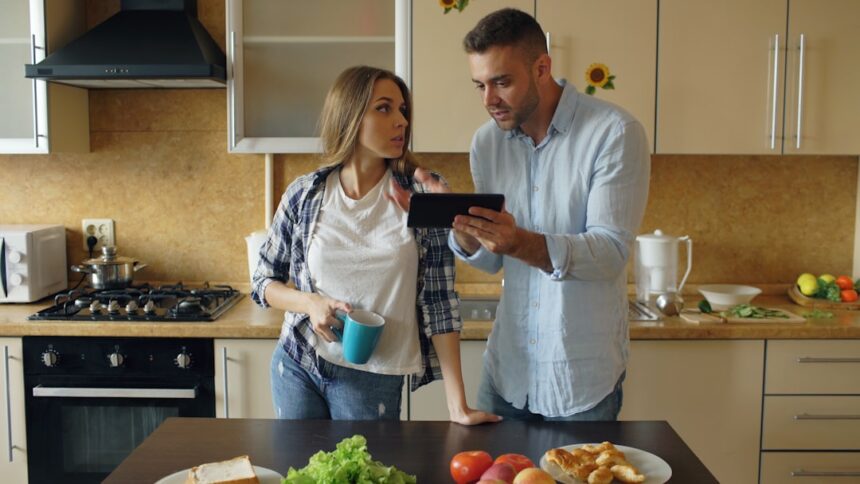Effective communication is the cornerstone of any successful relationship, whether personal or professional. You may find that the ability to convey your thoughts clearly and understand others is essential for fostering connections and achieving mutual goals. When you communicate effectively, you not only share information but also build trust and respect.
This creates an environment where ideas can flourish, and collaboration becomes seamless. In a world that often feels fragmented, honing your communication skills can bridge gaps and foster understanding. Moreover, effective communication can significantly impact your career trajectory.
In the workplace, the ability to articulate your ideas and listen to others can set you apart from your peers. You may notice that those who excel in communication often find themselves in leadership roles or are sought after for collaboration on important projects. By prioritizing effective communication, you position yourself as a valuable team member who can navigate complex discussions and contribute meaningfully to group dynamics.
Key Takeaways
- Effective communication is crucial for building rapport and trust in any relationship or interaction.
- Active listening techniques, such as paraphrasing and summarizing, can enhance understanding and show empathy.
- Nonverbal communication cues, such as body language and facial expressions, play a significant role in conveying messages.
- Using empathy can help in understanding others’ perspectives and building stronger connections.
- Clarifying misunderstandings promptly can prevent conflicts and improve communication.
Active Listening Techniques
Active listening is a vital component of effective communication that you should master. It goes beyond merely hearing the words spoken; it involves fully engaging with the speaker and demonstrating that you value their input. One technique you can employ is to maintain eye contact, which shows the speaker that you are present and attentive.
Nodding occasionally can also signal your understanding and encourage them to continue sharing their thoughts. Another powerful active listening technique is paraphrasing what the speaker has said. By restating their points in your own words, you not only confirm your understanding but also give them an opportunity to clarify any misconceptions.
This practice fosters a deeper connection and encourages open dialogue. Additionally, asking open-ended questions can further enhance the conversation, allowing the speaker to elaborate on their ideas and feelings, which ultimately leads to a richer exchange of information.
Nonverbal Communication Cues

Nonverbal communication plays a crucial role in how messages are conveyed and interpreted. You may not realize it, but your body language, facial expressions, and even your posture can significantly influence how others perceive your message. For instance, crossing your arms might signal defensiveness or disinterest, while an open posture can convey receptiveness and engagement.
Being aware of these cues allows you to align your nonverbal signals with your verbal messages, creating a more coherent communication experience. Furthermore, paying attention to the nonverbal cues of others can provide valuable insights into their feelings and attitudes. You might notice that someone’s tone of voice or facial expression contradicts their words, indicating discomfort or disagreement.
By being attuned to these signals, you can adjust your approach accordingly, fostering a more empathetic and understanding interaction. Ultimately, mastering nonverbal communication enhances your ability to connect with others on a deeper level.
Using Empathy to Enhance Understanding
| Metrics | Data |
|---|---|
| Number of Empathy Training Sessions | 15 |
| Employee Satisfaction Score | 4.5 out of 5 |
| Customer Retention Rate | 85% |
| Team Collaboration Improvement | 20% |
Empathy is a powerful tool in effective communication that allows you to connect with others on an emotional level. When you practice empathy, you strive to understand the feelings and perspectives of those around you. This not only helps you respond more thoughtfully but also creates a safe space for open dialogue.
You may find that when you express genuine concern for someone’s feelings, they are more likely to reciprocate and share their thoughts honestly. To cultivate empathy in your interactions, try to put yourself in the other person’s shoes. Consider their background, experiences, and emotions as they relate to the conversation at hand.
By acknowledging their feelings and validating their experiences, you foster a sense of trust and understanding. This empathetic approach can lead to more productive discussions and stronger relationships, as both parties feel heard and valued.
Clarifying Misunderstandings
Misunderstandings are an inevitable part of communication, but how you handle them can make all the difference.
You might start by calmly expressing your perception of the situation and inviting the other person to share their perspective.
Additionally, using clarifying questions can be an effective strategy for ensuring that both parties are on the same page. Instead of making assumptions about what the other person meant, ask them to elaborate or clarify their statements.
This not only demonstrates your commitment to understanding but also encourages a collaborative approach to resolving any confusion. By addressing misunderstandings head-on, you strengthen your communication skills and build a foundation for more effective interactions in the future.
Building Rapport and Trust

Building rapport is essential for fostering strong relationships in both personal and professional settings. You may find that establishing a connection with others creates an atmosphere of trust and openness, making it easier to communicate effectively. One way to build rapport is by finding common ground with the other person.
This could involve discussing shared interests or experiences that resonate with both of you. Another important aspect of building rapport is being authentic in your interactions. When you present yourself genuinely, others are more likely to feel comfortable opening up to you.
You might also consider using humor appropriately; laughter can break down barriers and create a sense of camaraderie. By investing time in building rapport, you lay the groundwork for meaningful conversations that can lead to deeper understanding and collaboration.
Cultivating Open and Honest Communication
Open and honest communication is vital for creating an environment where individuals feel safe expressing their thoughts and feelings. You may find that when you encourage transparency in your conversations, it fosters trust and strengthens relationships. To cultivate this type of communication, start by modeling honesty in your interactions.
Share your thoughts openly while being respectful of others’ perspectives. Encouraging feedback is another way to promote open communication. Let others know that their opinions matter and that you value their input.
This creates a culture where everyone feels empowered to speak up without fear of judgment or retribution. By prioritizing open and honest communication, you create a space where ideas can be shared freely, leading to more innovative solutions and stronger connections.
Recognizing and Managing Emotions
Emotions play a significant role in communication, influencing how messages are conveyed and received. You may find that recognizing your own emotions as well as those of others can enhance your interactions significantly. When you are aware of how emotions impact communication, you can respond more thoughtfully rather than react impulsively.
For instance, if you notice that someone is upset during a conversation, acknowledging their feelings can help de-escalate tension. Managing emotions effectively also involves practicing self-regulation. When faced with challenging conversations or conflicts, take a moment to breathe and collect your thoughts before responding.
This pause allows you to approach the situation with a clearer mindset rather than being driven by emotion alone. By recognizing and managing emotions in yourself and others, you create a more constructive communication environment where everyone feels respected and understood.
Tailoring Communication to Different Audiences
Effective communicators understand that one size does not fit all when it comes to conveying messages. You may need to tailor your communication style based on your audience’s preferences, backgrounds, and needs. For instance, when speaking with colleagues in a formal setting, using industry-specific terminology may be appropriate; however, when communicating with friends or family, a more casual tone might be better received.
Additionally, consider the cultural backgrounds of those you are communicating with. Different cultures have varying norms regarding communication styles, so being sensitive to these differences can enhance understanding. By adapting your approach based on your audience, you demonstrate respect for their perspectives and increase the likelihood of successful communication.
Seeking Feedback for Improvement
Seeking feedback is an essential practice for anyone looking to improve their communication skills continually. You may find that asking for input from trusted friends or colleagues provides valuable insights into how others perceive your communication style. Constructive feedback can highlight areas for improvement while also reinforcing what you do well.
When seeking feedback, approach it with an open mind and a willingness to learn. Be specific about what aspects of your communication you would like feedback on—whether it’s clarity, tone, or engagement level—and encourage honest responses. By actively seeking feedback and implementing suggestions for improvement, you demonstrate a commitment to growth that can enhance both your personal relationships and professional interactions.
Practicing Patience and Understanding
In today’s fast-paced world, patience is often overlooked as a vital component of effective communication. You may find that taking the time to listen fully before responding can lead to more meaningful conversations. Practicing patience allows you to absorb what others are saying without rushing to formulate your response prematurely.
Understanding that everyone has different perspectives shaped by their experiences is equally important. When faced with differing opinions or conflicts, approach these situations with an open heart and mind. By practicing patience and understanding in your interactions, you create an atmosphere where dialogue can flourish, leading to deeper connections and more productive outcomes.
In conclusion, effective communication is an intricate dance that requires practice, awareness, and empathy. By honing your skills in active listening, nonverbal cues, emotional intelligence, and adaptability, you position yourself as a strong communicator capable of fostering meaningful relationships across various contexts. Embrace these principles as tools for growth in both personal and professional realms; they will serve you well as you navigate the complexities of human interaction.
If you’re looking to improve your communication skills and resolve any issues you might be facing, you might find it helpful to explore various strategies and insights on the topic. A related article that could provide valuable guidance is available on the Unplugged Psych website. This resource delves into effective communication techniques and offers practical advice for overcoming common communication barriers. For more detailed information, you can visit the article by clicking on this link.
WATCH THIS! The Shocking Truth About Perception Loops
FAQs
What are common communication problems?
Common communication problems include misunderstandings, lack of clarity, poor listening skills, non-verbal communication issues, and cultural differences.
How can communication problems affect relationships?
Communication problems can lead to misunderstandings, conflicts, and a breakdown in trust within relationships. They can also hinder the ability to work together effectively and achieve common goals.
What are some strategies for fixing communication problems?
Strategies for fixing communication problems include active listening, asking for clarification, using clear and concise language, being aware of non-verbal cues, and seeking to understand different cultural communication styles.
How can technology contribute to communication problems?
Technology can contribute to communication problems through misinterpretation of tone in written communication, distractions during conversations, and over-reliance on digital communication at the expense of face-to-face interaction.
What role does empathy play in fixing communication problems?
Empathy plays a crucial role in fixing communication problems as it allows individuals to understand and connect with the emotions and perspectives of others, leading to more effective and compassionate communication.




